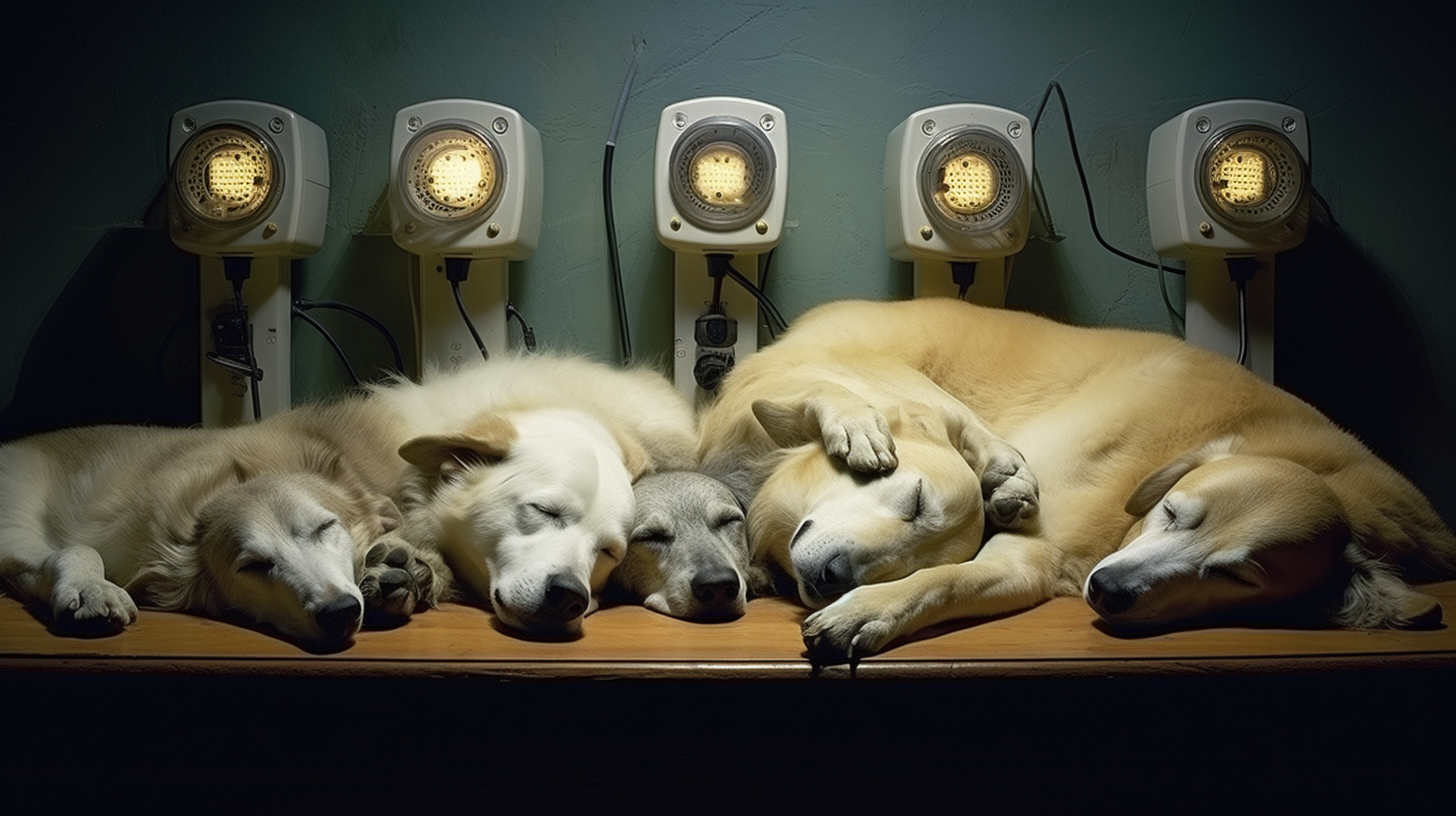In the snuggly and furry world of the Canine Republic, the minds of our four-legged friends are not only active during the day—they are also buzzing with activity once they hit the hay. Indeed, the question of whether dogs dream is old news—we know they do. Paws twitching and soft woofs during naptime are evidence enough. But the latest question wagging tails across the republic is: What if artificial intelligence could influence those dreams?
The idea itself might sound like science fiction, and yet, researchers at the Canine Cognitive Center (CCC) have been busy developing AI-driven technology that could lead our doggy pals into a land of pleasant dreams—the so-called Electric Sheep Program.
Skeptics might bark at the concept, challenging the ethics and motivations; after all, should we meddle with the natural snoozing state? However, proponents wag their tails with excitement, claiming these artificial dreamscapes could enhance learning, reinforce training, and even calm the storm of an anxious mutt.
The Science Behind the Winks
The journey into dreamland typically begins with a cascade of brainwaves that transition from alpha to theta and finally to the dreaming stage—rapid eye movement (REM). Imagine, if you will, a gently humming machine, not unlike a sophisticated doggy bed, equipped with sensors and minimalistic earphones. This is where the AI taps into the REM cycle, conducting orchestras of soothing scenarios as Fido chases endless sticks, or Lady retrieves her favorite ball from the serene lake of dreamland.
The AI doesn’t just generate random frolics. It’s based on adaptive algorithms that learn from a dog’s daily experiences. Overheard from a young pup, I’ve been chasing this delightful virtual squirrel every night, and you know what? My fetch game has never been sharper!
The idea is to use the characters and plots from day-to-day life and weave them into nighttime narratives that could have real-world benefits.
Tail-Wagging Benefits
Fido may not be plagued by electric sheep, but these AI-driven dreams might actually help with real issues. The CCC’s preliminary studies are showing promising signs that enhanced dreaming can alleviate stress, aid in memory consolidation, and even lower aggression levels. Much like the recently covered topic of mindful meditation to relieve canine stress, this new frontier might just be another step towards a more balanced and happy pooch.
But What About the Cons?
Not everyone’s tail is wagging with excitement, however. Critics argue that tampering with dreams could have unforeseen consequences on the psychological well-being of dogs. Concerns have also been raised over privacy and autonomy—should we really be ‘programming’ our pups while they sleep? These are questions digging into ethical bones that the society of the Canine Republic will have to chew over.
A Pawse for Thought
As we ponder the possibilities of shaping our pets’ dreams, it’s important to take a paws and consider the implications. This isn’t just about technological prowess or making sure Rex gets a good night’s sleep; it’s a comprehensive look into our responsibilities as stewards of canine companions.
The Electric Sheep Program is still in its puppy stage, but it has all the potential to grow into a hulking hound of innovation. Whether it’s the next big leap or a frivolous fantasy will depend on ongoing research, ethical discussions, and perhaps the dreams of the dogs themselves.
Looking Ahead
Is a follow-up article in the cards? Well, with the debate only just leaving its kennel and the dream machine promising new insights into canine cognition, it seems inevitable. We might soon find ourselves pondering not if dogs dream of electric sheep, but what those dreams tell us about our furry friends’ inner lives.
Whichever side of the fence you sit on, we can all agree there’s something inherently delightful about the idea of helping our beloved pets have sweet dreams. If technology can be our loyal companion in that quest, perhaps we’re on the cusp of a barking brilliant revolution in pooch snoozing. And who knows — we might be a step closer to understanding the old adage, ‘let sleeping dogs lie.’
